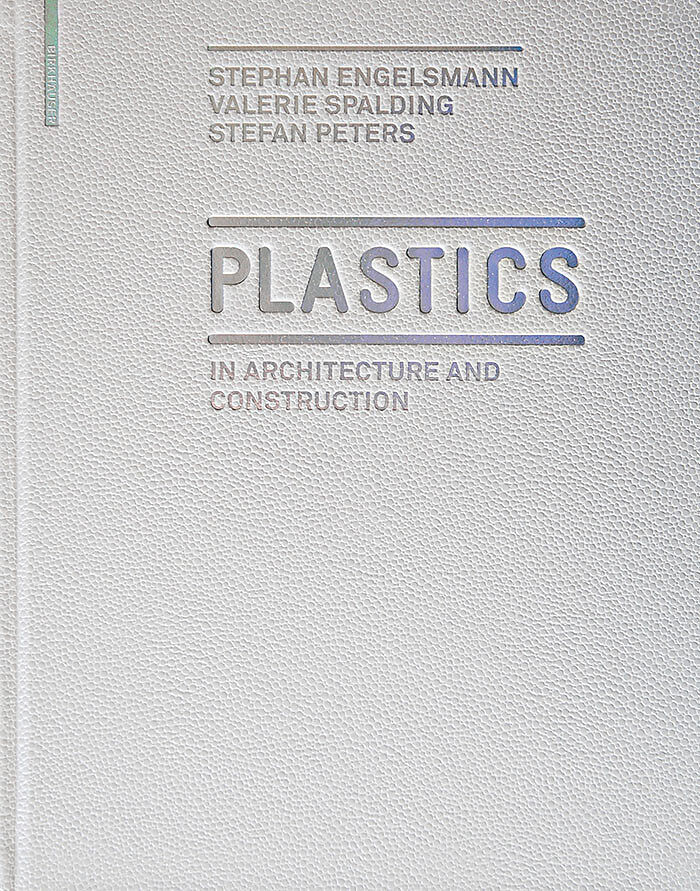Plastics
Format:
E-Book (pdf)
EAN:
9783034611947
Untertitel:
in Architecture and Construction
Genre:
Architektur
Autor:
Stephan Engelsmann, Valerie Spalding, Stefan Peters
Herausgeber:
Birkhäuser Verlag GmbH
Anzahl Seiten:
176
Erscheinungsdatum:
05.11.2012
ISBN:
978-3-0346-1194-7
Plastics are high-performance materials of wide use in the built environment. Their versatile technical properties are particularly fascinating. A broad range of form-giving and finishing processes makes plastic especially interesting for complex geometries in combination with digital planning processes. Following the pioneering plastic structures of the 1970s, a number of spectacular buildings have in recent years highlighted the outstanding technical and aesthetic potential of the material.
Until now, however, there has been no systematic treatment of the use of plastic in architecture. This book seeks to fill that gap by providing an introduction to the structural and design possibilities of plastic. It introduces the material and its specific characteristics, describes various types of plastic in terms of their relevance for building, explains processing technologies and presents typical products and components. A concise presentation of twenty-five international built projects - organized by the type of application and the plastic involved - documents the broad range of plastic in architecture. Finally, a look ahead at the future describes the current state of the art in materials research.
Autorentext
Prof. Dr.-Ing. Stephan Engelsmann is a civil engineer; he did his studies at the Technische Universität München (Technical University of Munich). He also studied architecture at the University of Bath. He then worked as a research associate at the chair of Jörg Schlaich. Since 2002, he has been a professor of structural engineering and design at the Staatliche Akademie der Bildenden Künste Stuttgart (Stuttgart State Academy of Art and Design). In addition, he is a founding partner of the firm Engelsmann Peters Beratende Ingenieure in Stuttgart. Valerie Spalding did her studies of architecture at RWTH Aachen (RWTH Aachen University). She has worked at a number of different architecture firms in Germany and abroad, including James Carpenter Design Associates in New York. Since 2005, she has been a research associate at the Staatliche Akademie der Bildenden Künste Stuttgart; the focus of her research is plastics in architecture. Stefan Peters is a civil engineer; he did his studies at Universität Stuttgart (Stuttgart University). He has worked at a number of different engineering firms, including Werner Sobek Ingenieure. From 2000 to 2006, he was a research associate at Universität Stuttgart, and he has been a partner at the firm Engelsmann Peters Beratende Ingenieure in Stuttgart since.
Inhalt
Preface
1 The development of plastic architecture
PRINCIPLES
2 Material properties of plastics
2.1 Forming characteristics and the manufacture of building elements 2.2 Resistance to environmental effects 2.3 Mechanical properties 2.4 Thermal properties 2.5 Flammability and fire performance 2.6 Additives, fillers and reinforcing materials
3. Basics of plastics
3.2 Polymer structure 3.3 The morphology of macromolecules 3.4 The classification of plastics according to their degree of cross-linking 3.5 Synthesising techniques 4. Plastics and their manufacture
4.1 Elastomers 4.2 Thermoplastics 4.2.1 Types 4.2.2 Manufacture 4.2.3 Working methods 4.2.4 Recycling 4.3 Thermosets 4.3.1 Material components 4.3.2 Manufacture 4.3.3 Properties CONSTRUCTION 5. Finished and semi-finished products 5.1 Solid sheets and panels 5.2 Profiled sheets and panels 5.3 Sandwich panels 5.4 Foams 5.5 Profiles 5.6 Special products 6. Building with plastics 6.1 Thermoplastics 6.1.1 Screwing 6.1.2 Clamping 6.1.3 Bonding 6.1.4 Welding
6.2 Thermosetting plastics 6.2.1 Screwing 6.2.2 Bonding 6.2.3 Dimensioning 6.2.4 Stability and durability
CASE STUDIES
7 Plastics as building envelope Chanel Mobile Art Pavilion Hong Kong, China; Tokyo, Japan; New York, USA BMW Bubble Frankfurt and Berlin, Germany Kunsthaus Graz Graz, Austria Railway station Emsdetten Emsdetten, Germany Idee Workstation Tokyo, Japan Reiss Headquarters London, United Kingdom Fiberline Composites factory and offices Middelfart, Denmark Farben des Konsums Berlin, Germany Laban Creekside London, United Kingdom Terminal V Lauterach, Austria Forum Soft Yverdon, Switzerland Polymer Engineering Centre Melbourne, Australia Dornier Museum Friedrichshafen, Germany Congress centre and auditorium Badajoz, Spain 8 Plastics as building structure Plastic tower sculpture Stuttgart, Germany D-Tower Doetinchem, Netherlands Hoofddorp bus station Hoofddorp, Netherlands Roof Yitzhak Rabin Centre Tel Aviv, Israel GRP-Glass-Pavilion Düsseldorf, Germany 9 Plastics as building structure and envelope Clip-On Utrecht, Netherlands Eiertempel Bern, Switzerland Five Bubbles Vienna, Austria fg 2000 Altenstadt, Germany Futuro different locations worldwide MYKO Weimar and Rostock, Germany Novartis Campus reception building Basel, Switzerland 10 Future developments High-performance material for supporting structures High-performance material for building envelopes Composite materials Reinforcement of supporting structures Joining technologies appropriate to the material New production methods Technology transfer Glossary
Bibliography
About the authors Acknowledgements
Name and building index
Subject index
Illustration credits

Leider konnten wir für diesen Artikel keine Preise ermitteln ...
billigbuch.ch sucht jetzt für Sie die besten Angebote ...
Die aktuellen Verkaufspreise von 3 Onlineshops werden in Realtime abgefragt.
Sie können das gewünschte Produkt anschliessend direkt beim Anbieter Ihrer Wahl bestellen.
Loading...
Die aktuellen Verkaufspreise von 3 Onlineshops werden in Realtime abgefragt.
Sie können das gewünschte Produkt anschliessend direkt beim Anbieter Ihrer Wahl bestellen.
| # | Onlineshop | Preis CHF | Versand CHF | Total CHF | ||
|---|---|---|---|---|---|---|
| 1 | Seller | 0.00 | 0.00 | 0.00 |
